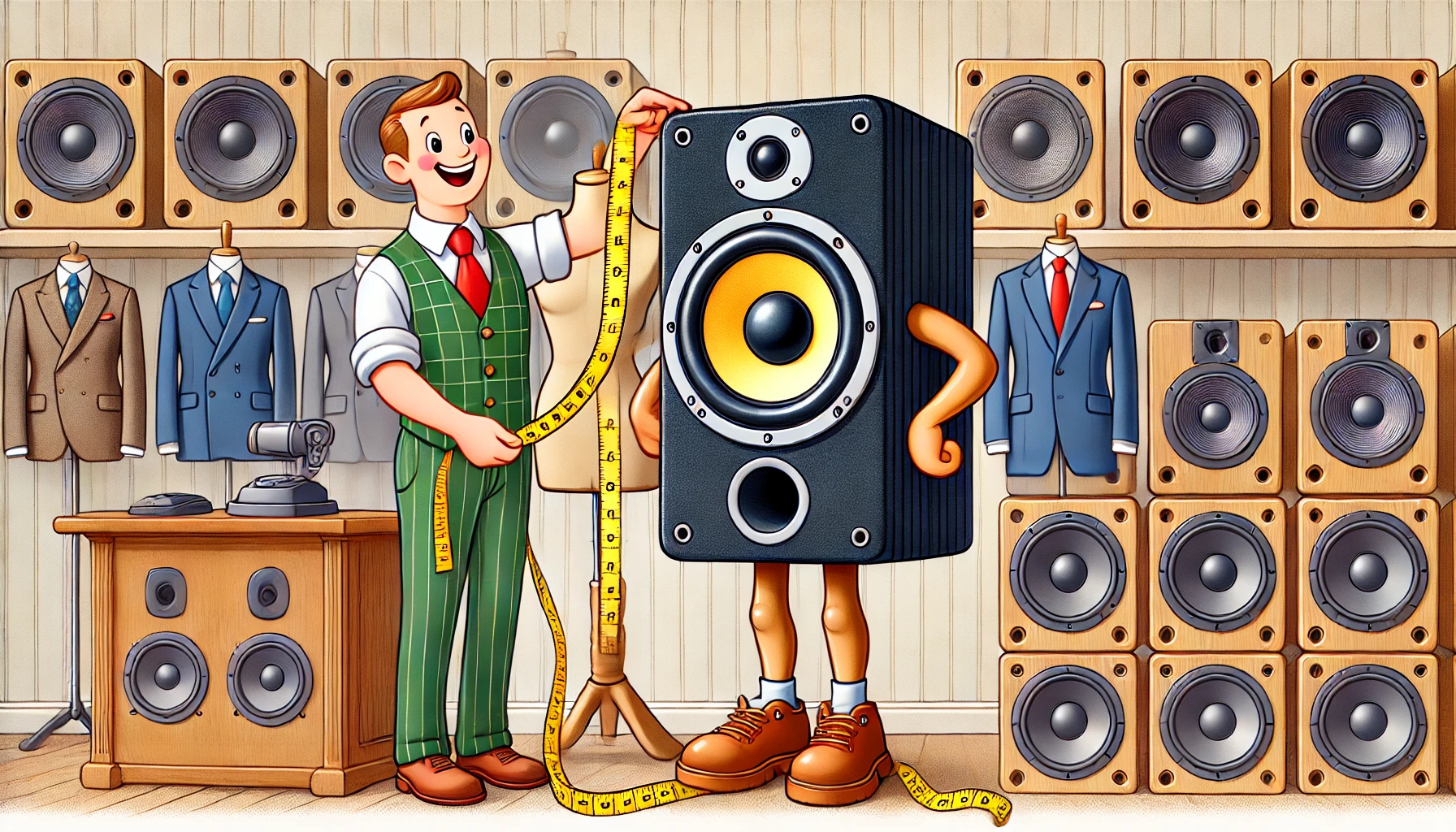Recently I posted about restoring a pair of vintage Technics speakers. I forgot, though, to measure the parameters while we’re at it. In order to do this, some equipment is required. It’s possible to do this with a sound card, some clever cabling, and a resistor, or all of this can be combined into a simple “calibrated” unit, the DATS V3.

This device, along with its companion software, makes it trivial to measure speaker parameters. So let’s begin. The woofer in question is a late 70s Technics EAS-30PL76S. Made in Japan, of course.
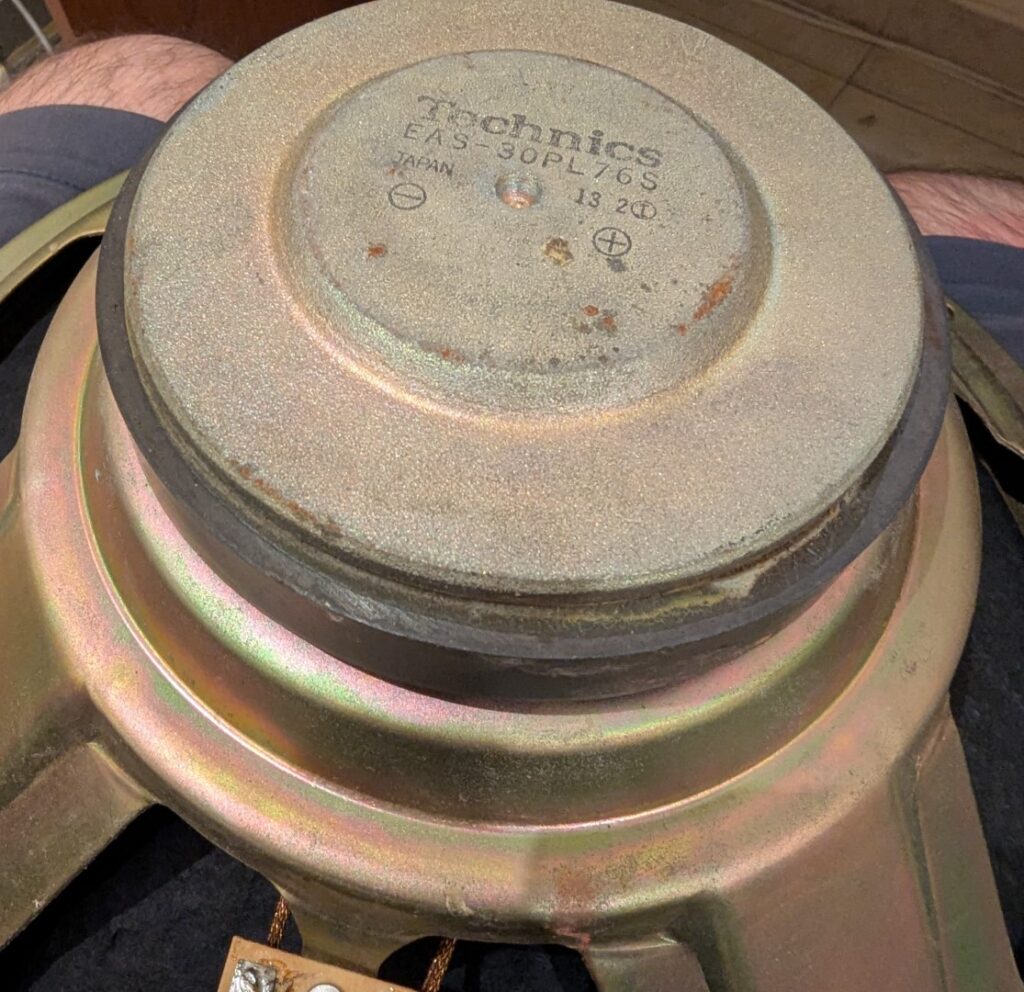
However, given its age, and the fact that this speaker has been reconed during its lifetime, whatever specs you find online about it will be an approximation.
The first piece of information we need is the cone diameter. This driver is a 12 incher, but to know exactly, we should measure it. Ideally from the center of the suspension. This one in particular measures 275mm
Then, we can hook it up to the DATS
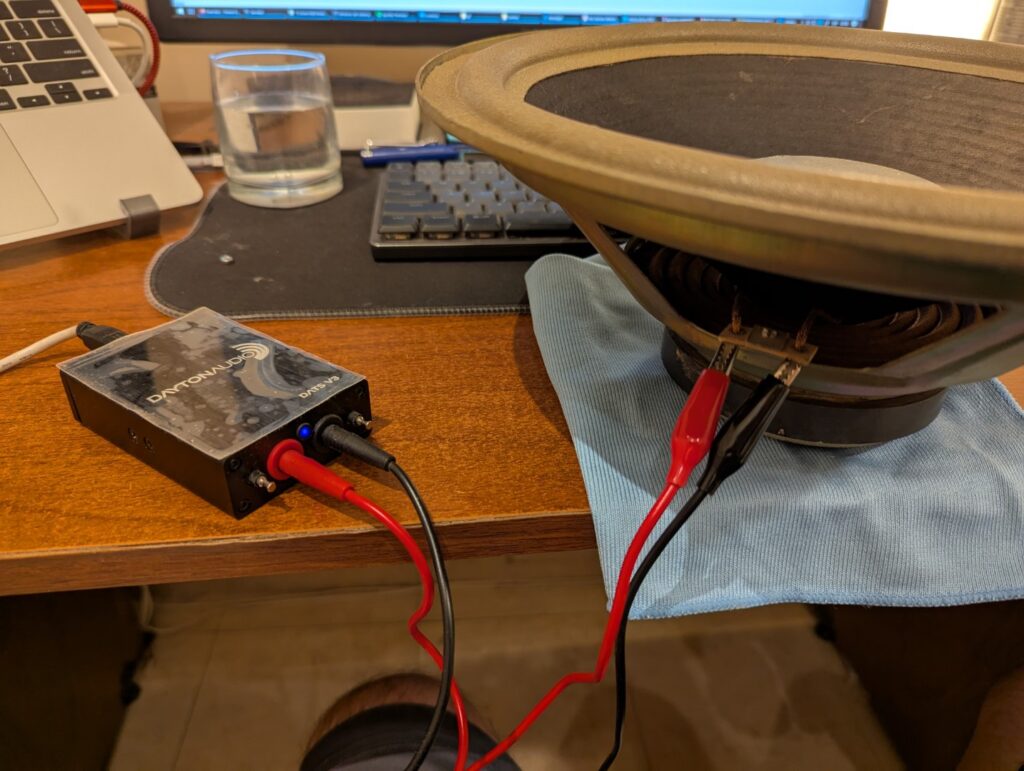
I put a piece of cloth on the table to dampen any vibrations. The second piece of kit we need is a known weight. And a way to attach it. I’m using a very large washer, and some 3M poster putty.
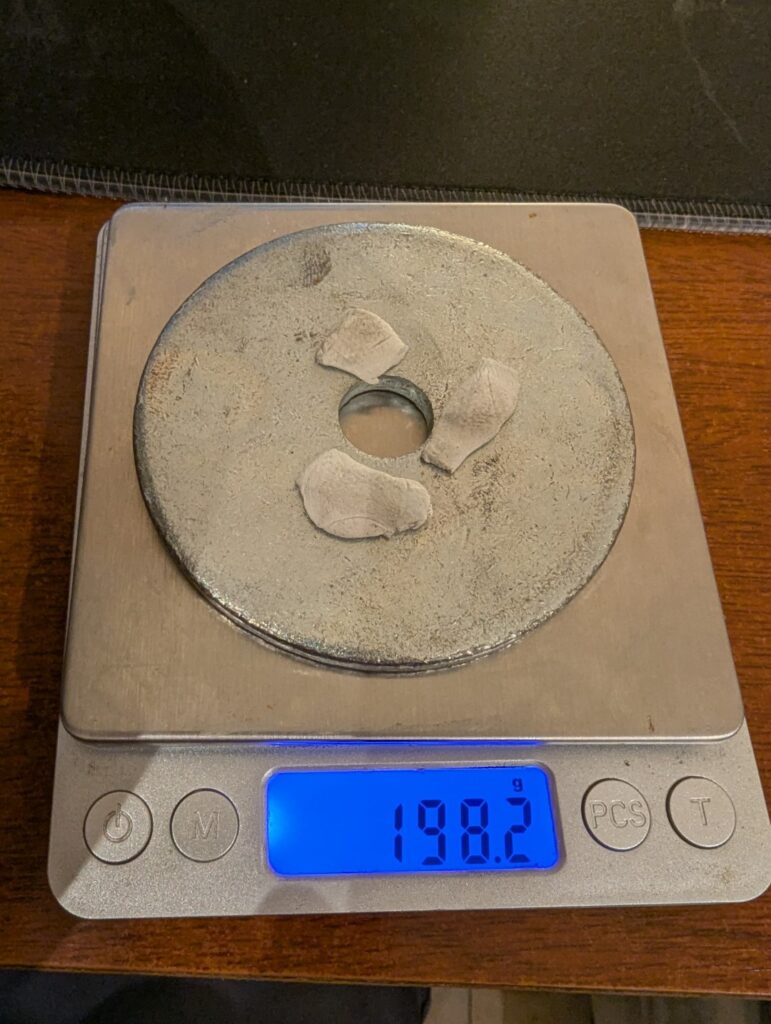
We need to weigh it. In this case , it’s 198.2 grams.
Then we can open the DATS software, and entered the data we know about the woofer:
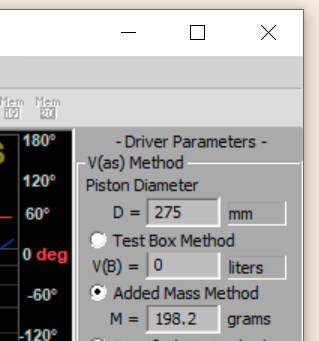
In this case, we know it’s 275mm, and we’ll be using the Added Mass Method, with a mass of 198.2 grams.
In the Impedance menu we have the two important options: Measure Free Air parameters and Measure V(as) by the Selected method.
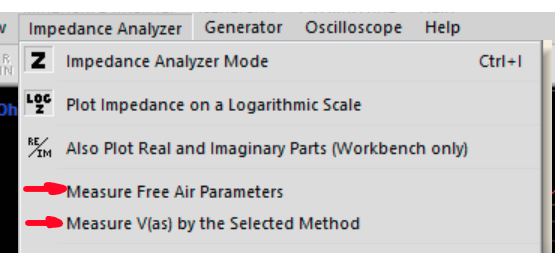
First, we click on Measure Free air paramters. You should hear a frequency sweep coming out of the woofer. Then, we’ll use the Measure V(as) by the selected method option. The program will ask you to add your weight. In this case, I stuck it to the woofer like this.

And here are the results:
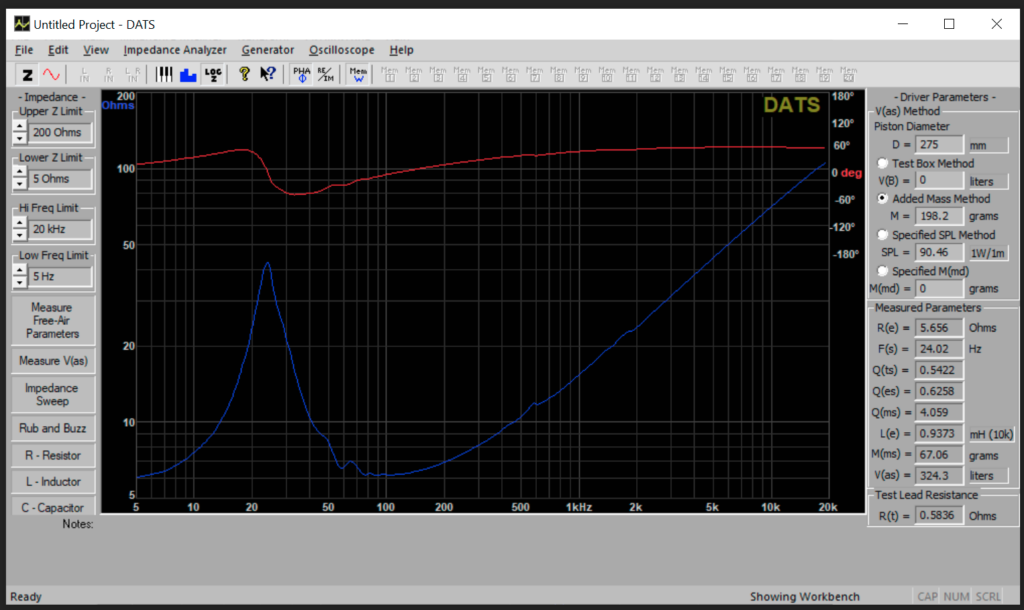
F(s) of 24hz! Wow!
Now we can simulate the enclosure and see what the theoretical response is. We’ll use WinISD for this. We need to know 3 things:
- speaker parameters (we just measured them)
- box volume
- port dimensions
According to this page, the dimensions are Width 420 x Height 803 x Depth 339 mm. The box is made of 18mm particle 3/4″ particle board. So let’s subtract 38mm of each side (420-38)x(803-38)x(339-38) = 87961230 cubic millimeters, so 88 Liters.
The port is conical. 58mm in diameter at its narrowest, and 60mm in length. Punching in the 88L figure, and adjusting the Tuning frequency to 29.5Hz we get a matching port, and the following figure:
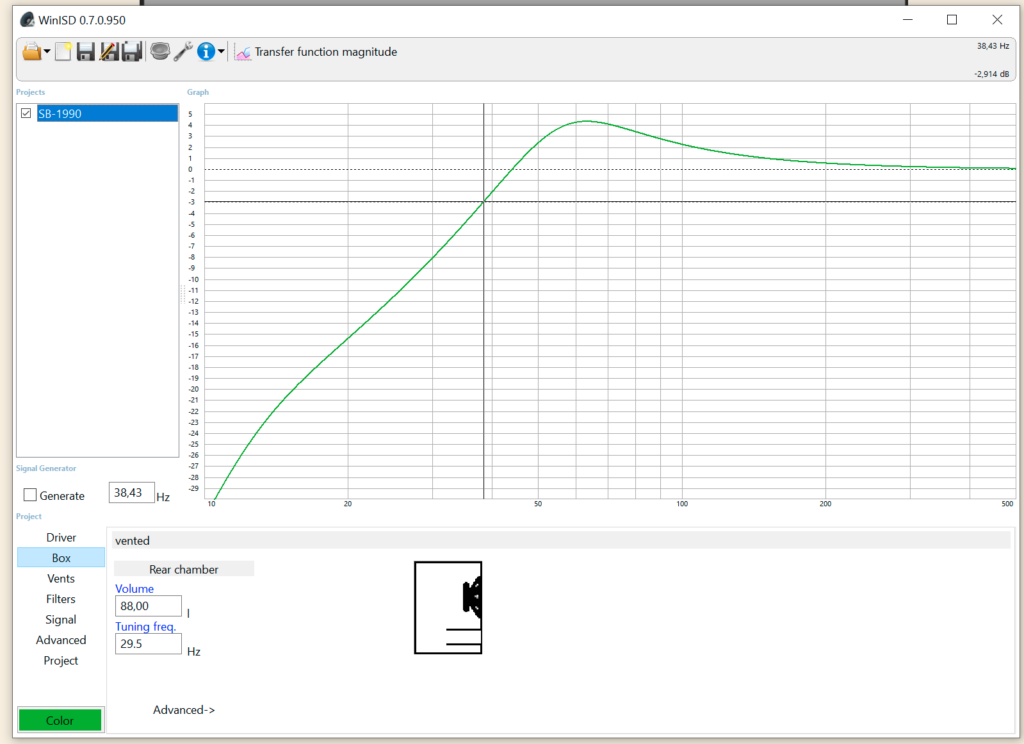
This speaker’s -3dB point is at 38Hz! Amazing. But it has a very pronounced (+4.3dB) hump at 63Hz. Certainly not a flat response, but this speaker is not bad at all for music.
For comparison, here are two more options:
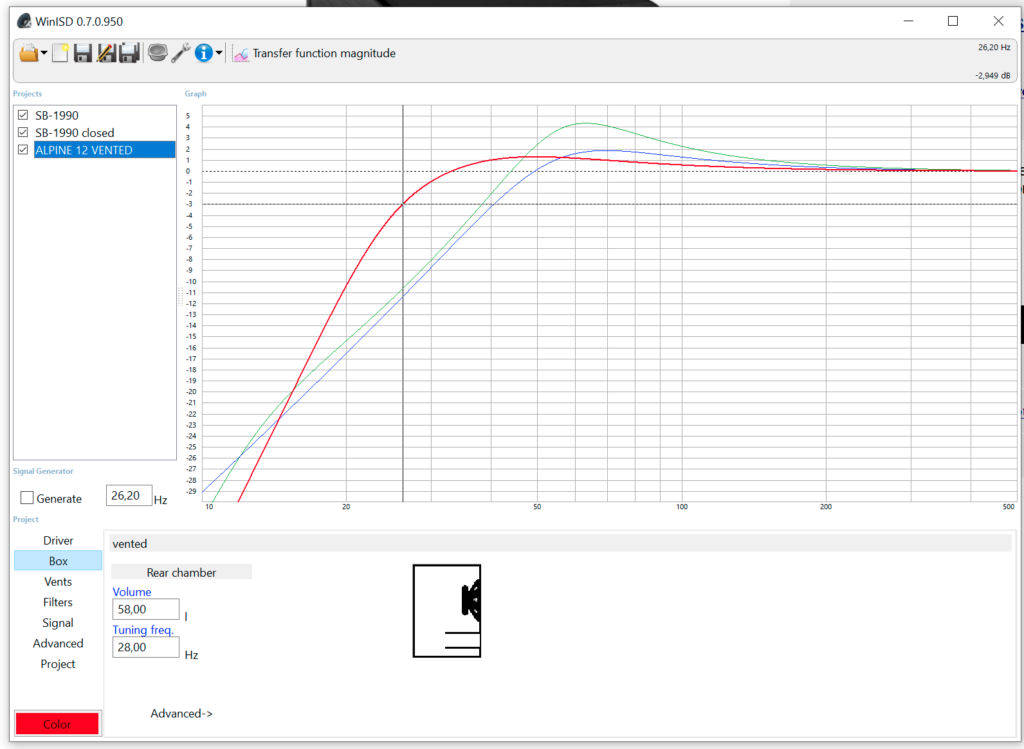
- The green line represents the “stock” SB-1990 box.
- The blue line is the same box, with the vent closed. We can see a reduction in the “hump” but the bass extension is not very affected
- The Red line is a modern 12 inch sub in a box half the size which I built myself and documented here. It’s an Alpine S-W12D4. It’s simply not a contest at this point. The Alpine’s -3dB point is at 28Hz, which is the SB-1990’s -10dB point!
The advancements in speaker technology are nothing short of remarkable. As we’ve seen, even though vintage speakers like the Technics EAS-30PL76S have stood the test of time and still perform admirably, modern designs have left them behind in key areas. Today’s speakers achieve deeper bass, flatter frequency responses, and better power handling—all within smaller, more efficient enclosures.
The ability to hit a -3dB point of 28Hz in a cabinet half the size of vintage counterparts highlights the leaps in driver engineering, materials, and modeling software that have revolutionized speaker design. While restoring vintage equipment is a rewarding experience and a testament to their craftsmanship, modern speakers offer performance that vintage models simply can’t match. It’s a testament to how far we’ve come, blending science, engineering, and art to redefine what great sound truly means.
The role of music
The evolution of music has significantly influenced the demand for speakers capable of reproducing extremely low frequencies. In the era when vintage speakers like the Technics SB-1990 were designed, the bass requirements were largely dictated by the acoustic and orchestral instruments of the time. Few traditional instruments, aside from organs or specific piano passages, could produce notes below 40Hz.
However, the rise of modern genres like EDM has reshaped these needs. EDM’s foundation is often built on deep, synthesized bass that regularly dips into the sub-bass range—frequencies well below what was once common in most music. These powerful low-frequency elements are not just an accent but a driving force in the genre, creating immersive soundscapes that demand precision and depth from speakers.
As a result, modern speaker designs have evolved to meet this challenge, delivering tight, controlled bass even at these extreme depths, something vintage designs were never optimized for.
